crafthaus
Interdisciplinary. Community. Advocacy. Humor.
Craft Scotland Conference
I have just returned from Dundee where I attended the Craft Scotland conference for 2013. As I have blogged before, I have a lot of time for Craft Scotland. I don't think that there is another national organisation in the world which has quite the energy and enthusiasm for promoting the makers from the country it represents, yet it is a tiny organisation with a huge vision. The British Council, The Crafts Council and the others all do very well, but they seem in some ways a bit hide-bound and finally meeting with some of the positive, buzzing people behind Crafts Scotland was one of the real pleasures of the weekend.
I know that I keep banging on about how great Dundee and every visit to the place makes me wish more and more that I could live there. The day started well with the exceptionally cheerful - if somewhat mischievous - staff in Caffe Nero, where I went to use Wifi and have a coffee before things kicked off. They suggested that I might want to take "an action shot" of them doing their job and so I complied. Unfortunately, I was using my new camera and this blurred effort was all that came out but I promised them that I would put it on my blog, so here it is:
The conference kicked off with coffee and a general introduction. It was great to see Diane King again, whom I haven't seen for about 5 years, as well as Anne-Marie Shilito and also to be introduced to people whom I have never met or who have only associated with me by social media (social media featured a lot in the conference).
The event was opened by Janet Archer, head of Creative Scotland (some of you may recall me blogging about the problems that this hitherto shambolic organisation had encountered, culminating in the champagne-Cannes fiasco) and Janet has been brought to clean up their act. Creative Scotland oversees and funds Craft Scotland - and I can't help but feel that the names could have been better differentiated - but by some miracle, Craft Scotland seems to have managed to avoid the taint of the previous mismanagement of Creative Scotland. Janet Archer put several peoples' backs up - mine included - from the start of her presentation by suggesting that her background in "contemporary dance" allowed her to understand craft practices by using some vague and wispy dancing around with definitions. To her credit, even she seemed slightly uncomfortable with this idea and rapidly moved on to more believable points such as her determination to get Creative Scotland back on track - something which she does seem to have been achieving - and to continue to support Craft Scotland in what it is doing.
The keynote speaker for the event was the charismatic Professor Hans Stofer who spoke wittily and movingly about both his own practice and his beliefs about craft practice in general, beliefs which chimed in deeply with my own - there is always something very pleasing about having one's beliefs (prejudices?) backed up by someone whom one respects! He talked about the need for honesty, how "the need to make a mark is primal and absolute", about his love of outsider art, discussed "the joy of making" and mentioned how his role as a teacher could be described as being that of a "critical irritant". Well, I am sure some of my students would agree with that description of my own role.
The main thrust of his talk was about the role of the designer in wider society, about how it is no longer necessary - or even desirable - for art-school graduates to all become artists, about how makers and craftspeople, artists and designers all have a wider role in society as problem-solvers and "different thinkers". While he was optimistic and positive and utterly convincing and I couldn't help agreeing with my philosophic brain, my pragmatic was telling me "the cretinous Gove would never understand".
("The Cretinous Gove" sounds like a Lewis Carroll invention.)
Hans' speech did exactly what is expected of a keynote: it set the tone. At no point in the following two days did the mood of the conference dip from the optimistic high in which he set it and the organisers, Fiona Logue and Roanne Dods are to be commended on this inspired choice.
Hans Stofer was a hard act to follow and some people might have baulked at so doing, especially if they were young, recent graduates and being asked to talk about their deeply personal journeys towards balancing their creative and business practices, often admitting failures and mistakes with painful honesty.
From left to right in the above photograph, we have Alex Dobbie, Laura Spring, Catherine Aitken and David Murphy, and Tom and Anna Luntley.
Alex, a design engineer, talked about his collaborations with his brother who is a silversmith (you may recall that I was much taken with his work in the Glasgow School of Art degree show) and how they have worked together to solve problems allowing his brother to accept commissions which he might otherwise have had to reject. They are also collaborating on a range of jewellery for mass-production.
Laura was probably the most developed of the group of makers and had actually taken her work to full, commercial production and it was admirable the way in which she spoke so honestly and openly about her mistakes and the way she felt about aspects of her production, about the compromises she had to make to get things done and about rejecting offers which while lucrative, were not right for her business or creative practice.
Catherine and David talked about accepting a large commission for the Edinburgh Sculpture Workshops and how they then used the money and the space to create the furniture and fittings for that space. Interestingly, their idea is to use the equipment and expertise already within the workshops to create furniture within budget and which is exactly suitable for the space.
Probably one of the most talked-about presentations of the whole two days came from Tom and Anna of "Bakery 47". They are both fine artists and have turned to baking (the dread words "artisan" and "artisanal" featured!) to allow themselves to collaborate as a husband-and-wife team making bread and cakes whilst also making a living. From my own point of view, they are a delightful couple and their idea of making top-notch, fine-quality baked goods as a team is as good as any. Their "local" ethos is superb but their determination to do it ALL themselves is not sustainable and whilst many people were enchanted by their story - a superb story it is too, most marketable - there were one or two people who dissented enough to say "it is not sustainable" or "they are going to burn out". I wish them well and have even agreed to buy bread from them but I also think that their essential romanticism about "community" and the insular nature of their production is going to grind them down rapidly and I think that this is something which many small makers experience: their work is their life and they don't realise how much work they are doing until something gives. With Tom and Anna, they are very much community-based and it struck me and a few others that their business is perfect for converting into a community enterprise project, something which could then be rolled out into other communities, fitting in with not only their own ethos but with the general Zeitgeist.
Lunch!
Yes, all that was a morning's work.
During the lunch interval, we got a chance to meet and chat as well as look at Beth Lamont's thoughtfully-curated "We Dundee" craft show of makers from Dundee, including a stand of jewellery from Vanilla Ink (I blogged about them some time ago too!).
The afternoon was a bit of a curate's egg and started off with an unfocussed and vague conversation between Amanda Game - an experienced and talented curator with an impressive understanding of Scottish applied arts - and Philip Long, the director of the new V&A at Dundee.
Amanda's microphone only worked intermittently, which didn't help anything but at times they appeared to be talking at cross-purposes about different things and the whole event smacked of not having been properly discussed or planned beforehand. There were some interesting points made throughout the exchange but by the end there were more than a few people scratching their heads and I think there is an irony in that one of the isolated notes I made during the talk says "Precision of language"!
One of the useful things I got from the talk was of the idea that a "creative ecology" could be cultivated using "Technology, Talent and Tolerance".
This was a disappointing session as both Philip and Amanda are such luminaries that I had been hoping for something a bit more dynamic.
After this we all broke up into small groups to discuss the idea of a "Scottish Craft Renaissance", which was just what was needed after spending the morning and most of the afternoon in the lecture theatre and the debates were lively. One of the great advantages of this was that it introduced us all to people we hadn't met previously and allowed us to mix and find out a bit about each others' practices.
These sessions were the first place where I began to notice that there was an "elephant in the room", the elephant being the divisive and unpleasant one of "Independence" and the confusion between what I defined as "Craft Scotland" and "craft scottish". For me, any development of craft in Scotland has to be real and sustainable; it has to be about small makers and communities of makers and they have to be supportive of each other. What I am not talking about it a bunch of hobbyists selling at a loss or break-even at craft fairs or, worse, selling imported "made in China" tat which they have somehow wrangled a "Made in Scotland" or "Harris Tweed" label onto. A craft renaissance in Scotland has to be about micro-businesses and government, local, national or Salmond's Edinburgh-centric talking shop, MUST take on board the fact that there are loads of efficient, sustainable, ethical and ecological one- or two-person craft micro-businesses out there who do NOT want to grow (such as Natalie Fergie's hand-dyed wool). They do not need to grow and, indeed, growing could wreck their sustainability. Government agencies seem to see growth as the only measure of business success, completely neglecting that someone may live very sustainably on a smaller scale, providing a product or service to a community and in return keeping the economy of that local community ticking over.
Unfortunately, I spoke to many people who simply didn't get this idea. What was encouraging was that this was definitely in the sights of the business support people to whom I spoke - more on them later - but it seemed beyond the grasp of some of the more "hobbyist" people present and was even outright - and somewhat nastily - rejected by one person I spoke to who actually criticised my friend and colleague Angus Ross for employing people to help him make his furniture. (This person also said that they wouldn't support local craftspeople as they would rather buy from a multiple and spend the balance on "a nice dinner", openly laughed at me when I was pointing out the importance of makers supporting each other and then bleated complaints about IKEA's historic practice of ripping off independent desingers. An exception in the course of the conference, thankfully.)
The tension between "Craft Scotland" and the "Independence" debate was unfortunately not tackled. The one person from Craft Scotland with whom I attempted to discuss it quite understandably stuck to the line that "Craft Scotland" was not involved in politics and while I accept that she has to say this, it is essential that the issue is discussed in some way. At the moment, anything labelled "Scotland" or "Scottish" runs the risk of being associated with the pro-independence movement; there is a danger that Scottish Crafts - as practiced by any craft practitioner in Scotland, be they a Colombian-born Fair Isle knitter, me or a retired Berkshire-born teacher making ceramics in Fife - becomes associated with the nationalist agenda. As the vast majority of people in Scotland are anti-independence (67% at the last poll, myself included in that number), this could be detrimental to the craft renaissance.
I mentioned above that I had the idea that there was a difference between "Craft Scotland" and "craft scottish" and this is another of the issues about which I feel very strongly. I was horrified to discover - I think it was from Laura Spring, but I could be wrong - that a huge volume of Harris Tweed is bought up and shipped to China, where it is made into iPad covers, phone ocvers and the like. This then comes back to Scotland for "finishing" and has the Harris Tweed orb attached and a "Made In Scotland" label put on it. This is not only dishonest but is actually undermining craft practice and one of the roles that Craft Scotland should think about taking on is that of policing standards such as this. Is this a time for the creation of the crafts version of the British Kitemark? Perhaps a uniquely Scottish Craft Kitemark?
I realise that not everyone will agree with that. These are just my personal thoughts and I am sure that other participants took away other things.
Time to break for Cakes from Bakery 47!
The final session of the day was from Fi and Vana of the amazing project Makeworks:
Just to be clear, I will say from the outset that I do not think that Fi, Vana, their photographer Ross or their sponsors (Jerwood Trust and Creative Scotland) realise how important, how impressive or how useful this project is. Fi and Vana are funny and personable and while their presentation was dynamic and exciting, their project was more.
They set off in a VW Camper van and toured around Scotland for 90 days aiming to visit as many makers and suppliers as they could with a view to creating a directory of all the people in Scotland who could be drawn upon for craft practice: sandcasters, tanneries, jewellers, potters, stone-cutters, knife-makers, weavers, spinners... The only criteria for inclusion in the directory is that the organisation or person had to be prepared to work with anyone else. What this means is that they have created a directory of resources for craftspeople: should I, for example, require a piece of granite cut, I will be able to find out where to do that.
One of the advantages of living in a small country!
Day Two
Day two was all about small groups and presentations by a variety of speakers. I am delighted to say that I chose to go to the talk by the wonderful Patricia van den Akker of The Design Trust.
Patricia is a whirlwind of wit, imagination and energy and the first group I went to was her "Pricing Is Personal" seminar. I will confess to having an issue with pricing my work. I think that many small makers do. We get so close to what we are doing that we lose sight of the larger picture. Patricia spoke for almost two hours and not once did she touch on anything which wasn't relevant to the subject in hand. This talk was essential for any maker who feels that their pricing might not be appropriate for the value of their work and she addressed both psychological and economic issues which affect how we price things as well as giving guidance on how to change pricing practice and position your product within the market. When I have attended talks like this in the past, the speaker has often been from a business-school background and it is all about market anaylsis and margins or worse, there are graphs in the presentations. Patricia is a graphic design graduate and her mum ran a gift-shop in the Netherlands; she came to London and started work with New Designers, so her background is not business-school but craft and design, which is refreshing. She understands the issues. I was so completely taken with her presentation that I skipped out of my scheduled afternoon presentation by Maklab - I am already fairly clear about what they do: sorry, Richard! - and went to hers instead, where we learned about diversifying income streams which, again, sounds boring to anyone who is more at home in the studio but which I can assure you that it was useful and interesting and I am very glad that I decided to go to this event.
All makers will benefit from visiting The Design Trust website and Patricia's talk has fired me up to redevelop my website and to move to start selling work directly though the website
And that was the end. A quick vote of thanks from Fiona and Roanne and we all departed for our various modes of transport home. My own journey home by train was considerably lightened by meeting with Sally Johnston of "Starter for 6" an organisation developing business startups in the creative sectors. I cannot believe that we have never met before as it turned into one of those conversations where we knew all the same people, hung out in all the same places but had never actually even spotted each other!
A truly inspiring weekend.
Comment
-
Comment by 2Roses on October 10, 2013 at 1:34am
-
You're painting with an awfully wide brush Harriete. Lets start with your frequent references to the "experience economy". By definition this is where the memory of the experience is the product being sold. Example: as education offerings might do if they were able to participate in the value that is created by the educated individual. I fail to see how this supports the notion that some undefined "organizations" trying to differentiate themselves from "craft fairs". I assume this is a reference to ACC, SOFA and a few of the other institutionalized shows that have been faltering in recent years.
While were on the subject of larger institutions, and the experience economy the idea that a few - very very few people - copy cat a workshop or somesuch is hardly a substantial issue facing craft. We're squabbling over crumbs at the bottom barrel. Institutionalized intellectual property theft is a much larger issue and until we organize the political influence to fight it we will remain impotent and distracted squabbling at the bottom of the barrel.
Is craft is really having a hard time differentiating the elite from the hobbiest? If true, there are only two conclusions: either there are a lot of really good hobbiests out there, or a lot of elitists. Maybe both.
I ask why it is that amateurs practicing craft at any level negatively impact the public's perception of the entire field of craft? I was in restaurant the other nite where some supremely hideous karioke was being performed. To my astonishment this did not color or confuse my impression of the entire field of music or lessen or my appreciation and recognition of musical artists that feel are more talented.
We have to stop blaming the public because the don't understand or appreciate us. If this is true - it is on us, not them.
-
Comment by Harriete E Berman on October 9, 2013 at 6:28pm
-
I would say the the public perception of craft is generally limited to street fairs and art festivals.
If I meet anyone and say that I work in metal or make "jewelry" their next expectation is a street festival white tent.
AND maybe I am "picking a bone" here, but I think that the "enthusiast" is coloring the public perception of craft.
While I do understand that the experience economy is the growth area of craft, and find nothing wrong with it per say, it is impact the craft market in many ways. No wonder that craft is removed from the name of many organizations, and schools. They are seeking a way to differentiate themselves from "craft fairs."Craft is having a hard time differentiating the elite level of craft from the enthusiast or hobbyist....and the hobbyist/enthusiast is creating huge problems.
The new enthusiasts sell work based on tutorials and instructional materials. They unethically and illegally share instructions as "workshop imposter", very often in The Guild of Unauthorized Sharing.They share information from workshop, books or e-books they have purchased, not understanding that they purchased access to the information. They do not understand copyright or ethical boundaries.
While bead stringers in China or housewives in Minnesota, may not be my competition, they are impacting the perception of craft, and handmade, and they are part of the problem.Harriete
I don't think any of this is malicious, my opinion is that it is largely from ignorance about the consequences. That is just the tip of the iceberg.
Harriete
-
Comment by 2Roses on October 9, 2013 at 3:18pm
-
Dauvit, may I also suggest that you consider joining EtsyMetal Team. This is the largest group of professional metalsmiths working within Etsy. It is international, and its purpose is to exchange information and support each other to make money selling on Etsy. Oh, we're a social bunch too, but our main activities are geared to online selling. You'll have to jury in but you won't have any problem there. http://etsymetal.blogspot.com/
-
Comment by The Justified Sinner on October 9, 2013 at 2:45pm
-
I like the jocular cynicism and thank you for adding a note of it. I was getting very serious...
I've thought about that comment about Etsy and it is exactly what Patricia was saying in her talk about "income streams" on Sunday. On reflection, I think that the best idea is to run Etsy to sell the less-costly pieces and make sure that it is easy to find the main website too. I wasn't really planning a "flounce" off of Etsy, more a discreet dropping but now I have reconsidered.
-
Comment by 2Roses on October 9, 2013 at 10:19am
-
My all time favorite quote:
"Nobody ever went broke underestimating the taste of the American public".
- P.T. Barnum
Jocular cynicism aside, I think you are getting closer to the source of the real challenge facing craftmakers, namely the misappropriation of craft brand values (I would say hijacking) by non-craft entities. Your examples point out several of the most egregious, and sadly, common practices. This is related to why I posed the question "who are we (craft) really competing against?". More importantly, we should be examining HOW we can more effectively compete against the real intrusions into our market space. My perspective is that we're fighting big business with big money, not some soccer mom stinging beads in her kitchen.
Dauvit, on a personal note, closing your Etsy shop may be a gratifying political statement, but I would also suggest that it exposes your work to the largest pool of online shopping traffic in the world. Learning how to effectively use that selling channel may be a better strategy in the long run than the relative anonymity of going it alone on the Internet.
-
Comment by The Justified Sinner on October 9, 2013 at 1:45am
-
Haha! Yes, I DO resent Armani for selling tat like that!
I think that I am generally disappointed by the public but that is a function of being optimistic and wanting the best for people. It is true that we all have slippages - last night I ate a packaged potato salad and no amount of "organic" or "free range" packaging will make me feel less guilty about that - and that a wholly handmade and handcrafted modern life is in any practical sense unlivable but it would be nice if people realised that there were options and most of the time they do not. The problem with that is that they are largely deliberately blinded to it by the money that you have so correctly said is spent "educating the customer".
Actually, what annoys me more - and these came up a couple of times at the conference - is the theft of designs from independent makers such as Myia Bonner; the lying about "handmade" by chains and corporates (see the comments about Harris Tweed in the original article) and; the lack of a coherent marketplace for genuine good-quality craft, although this is being adressed rather interestingly in the UK by Things British.
It is as a result of all this thinking that I have decided to pull all my work off "Etsy" and start selling directly: I do not want to be associated with what has become a second "Ebay". I have identified who my customers are and I am going to start tackling them in a much more direct way and this is something that everyone can now do.
NICHE is the word.
(I think there might be a song in there!)
-
Comment by 2Roses on October 8, 2013 at 2:37pm
-
Yes, we can compete on originality. Amply so. Quality, well, I'm not so sure about that. No question that the quality of a well made hand crafted item can be superb. I'll even give you superior to a commercially made product. That is unquestionably why you drive a mercedes and only wear bespoke clothing on which to drape your handmade adornment when you attend live theatrical performances. On the other hand, some folks, perhaps even you in a moment of weakness, throw on some off the rack cloths made in China and hop in your used Toyota when you want to go see a mindless "popcorn" flick at the cineplex. The point being that for most people good enough is....well....good enough.
And this brings us smack into the middle of a discussion about VALUE. Winston Churchill famously said, "I have never been disappointed with the best". Nice if you can afford it. But most people, craftspeople included, make buying decisions on based on a variety of value criteria. For example, you may insist on the very best quality tools for your craft, but be perfectly OK with a cheap set of cookware from Wallmart.
When I said that we cannot possibly compete in the marketplace, that was admittedly an overstatement. We can and do complete in our respective niche markets. Dauvit ponders why a designer can command a high price for chunk of commercially mass produced steel. I here this sentiment constantly from craftspeople. Often laced with a good dollop of resentment. The reason is that the majority of the cost of that item is represented by advertising. What people in the craft world like to call "educating the customer". One of these big design houses spends more on "educating the customers" in one year than the entire craft jewelry industry earns in the same period. We are nano-market.
I, like Dauvit, am completely optimistic at our prospects going forward. Not because of what we can't do, but because with a clear and realistic vision of what we can do, we'll stop wasting our time worrying about bead stringers in China or housewives in Minnesota. They are not our competition, nor are they the problem.
Think about it. If you are genuinely competing on quality and originality. Who is your real competitor? Who is that customer, who really wants quality and originality and is willing to pay for it, considering buying instead of you?
Answer that and then lets talk about competing in the marketplace.
-
Comment by Harriete E Berman on October 8, 2013 at 12:39pm
-
Agree 100% with the "assertion" that the marketplace doesn't" value "handmade" because their experience of handmade is poor and that experience comes from those terrible products previously described.
"I don't agree that we "cannot possibly compete in the marketplace": yes, we cannot compete with volume producers but we CAN compete on originality and quality, which are two qualities which are highly valued by certain sectors of the population. By their very nature, those qualities are exclusive and therefore should be saleable. How does Armani sell a piece of mass-produced stainless steel with their branding on it as a $170 necklace? By giving it the air of exclusivity."
Craft marketing is poor to mediocre. Look at those booths. The white tent, even the Mercedes Benz of the white tent" has really poor display.
-
Comment by The Justified Sinner on October 8, 2013 at 12:21pm
-
Actually, I agree with the assertion that "the market does not care and does not place the same value on 'handmade' that you do". In fact, that is probably the crux of the whole thing. My assertion would be that they don't value "handmade" because their experience of handmade is poor and that experience comes from those terrible products previously described.
I don't agree that we "cannot possibly compete in the marketplace": yes, we cannot compete with volume producers but we CAN compete on originality and quality, which are two qualities which are highly valued by certain sectors of the population. By their very nature, those qualities are exclusive and therefore should be saleable. How does Armani sell a piece of mass-produced stainless steel with their branding on it as a $170 necklace? By giving it the air of exclusivity.
My question now is, how do we explain that value to the general population?
I am fundamentally optimistic about this. The thirst for the original and the quality in products has become much wider in the last few years, perhaps as the recession forces people to consider "value for money" much more and my concern is really much more that we capitalise and scale that demand.
I think you would have been surprised and pleased by the number of people at the conference who were actually making a living from their craft practice and for whom the lure was very much economic stability doing something that they also love, as well as how often the word "sustainable" cropped up in all sessions as well as general chat.
-
Comment by 2Roses on October 8, 2013 at 11:55am
-
Well, apparently the marketplace does not reward us for the creative, original thinking and meticulous execution commensurate with what we think we deserve. Assuming for a moment that your premise is correct "that poorly-made and poorly-designed goods from anywhere are clouding the public perception of the marketplace for "handmade". Another way of seeing this is that the market does not care and does not place the same value on "handmade" that you do.
Your standards of what is in "good taste" is out of sync with the larger markeplace. That is not a condemnation of your sense of taste, nor an endorsement of the clearly abysmal taste of the general public. All of this is a recognition that we are an infinitesimally small niche market with pretensions of being a mass market.
Art jewelry magazine clearly understands where the mass market is and what it is interested in. Does that mean they are a better publication than MetalSmith. No. It just means they are more popular and more profitable.
The larger issue that is germane to this discussion from my perspective is that most of us engage in anacronistic manufacturing practices that cannot possibly compete in the marketplace. This is romance and lure for most of us, but we do it at the sacrifice of our own economic well being. So I ask you - who is the hobbiest?
- ‹ Previous
- 1
- 2
- 3
- 4
- Next ›
Latest Activity
Groups
Videos
© 2024 Created by Brigitte Martin.
Powered by
![]()

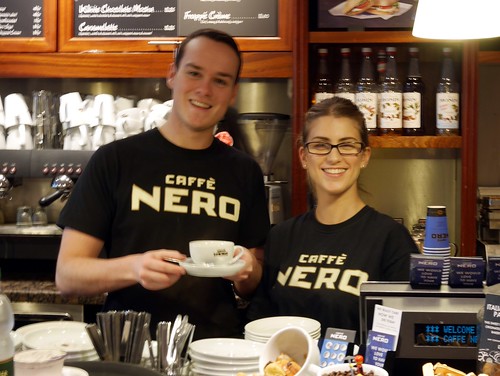
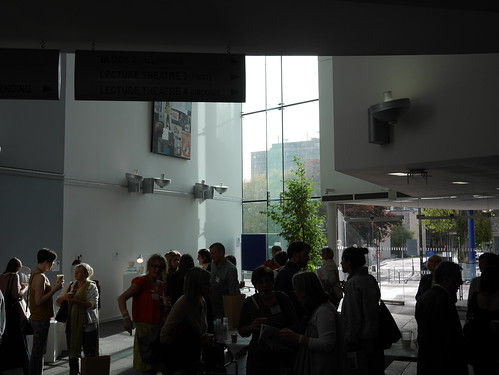
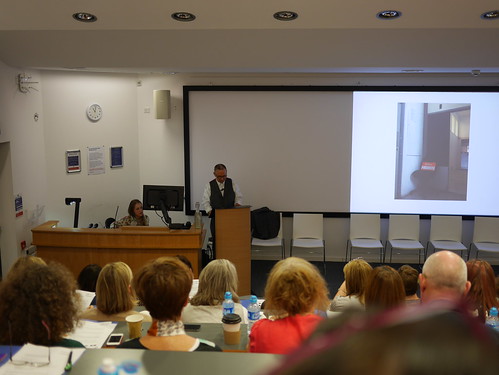
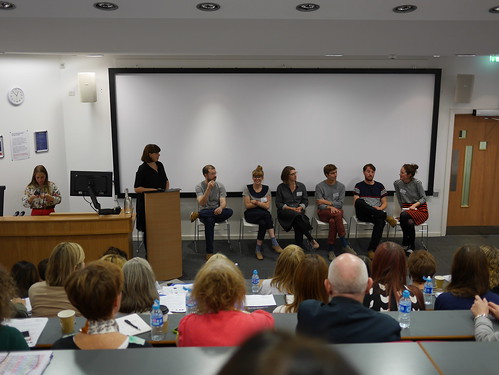
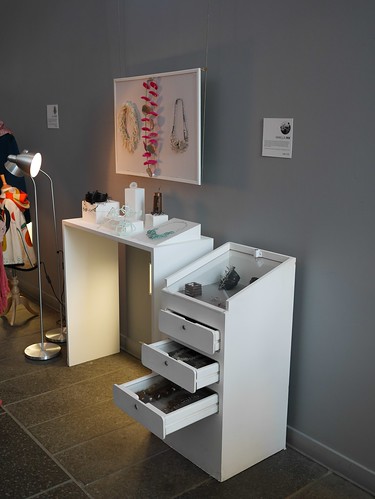
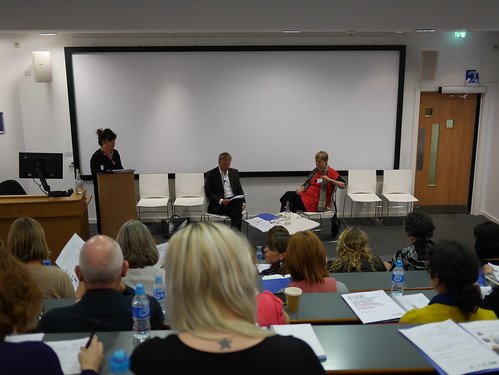
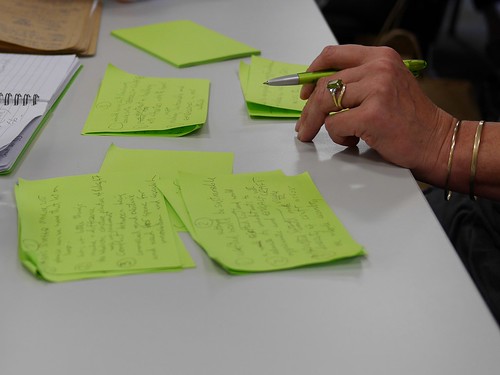
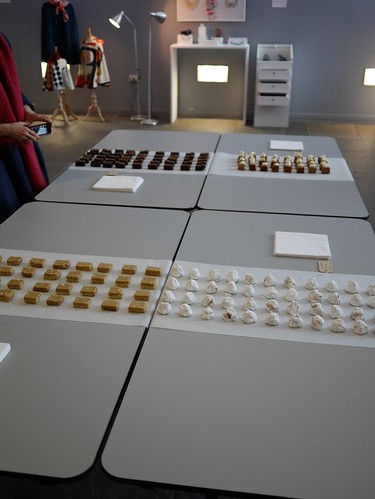

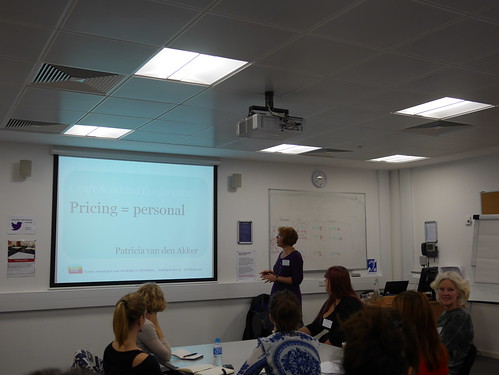


You need to be a member of crafthaus to add comments!
Join crafthaus